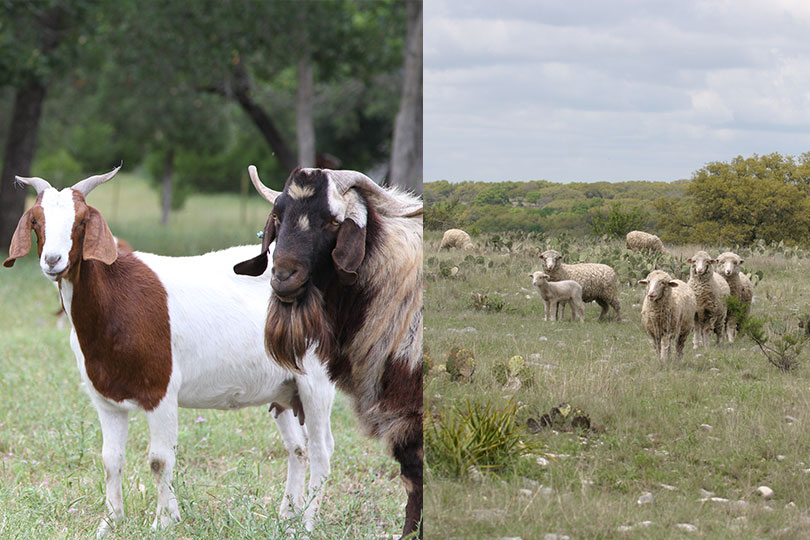By Emmy Powell
Communications Specialist
The hot and dry summer left an impact on the Texas sheep and goat industry.
Early summer began with some scattered rain showers, but triple-digit temperatures have beat down on the state for the last few months.
“It’s been really hot the last two months. We started off the summer pretty well with some rain through most of West Central Texas in the middle of May. But by mid-June, that stopped, and it was just hundred-degree days from there on,” said Jake Thorne, Texas A&M AgriLife Extension Sheep and Goat specialist in San Angelo. “It’s been tough on the sheep and goats, and it’s certainly been tough on the country.”
The lack of available forage has been tough, but Thorne says there is a positive. The hot and dry weather decreases the amount of parasites.
Gastrointestinal worms are one of the biggest health threats to sheep, and Thorne said they were a big issue in May and June.
But as season change, so does the outlook ahead.
Sheep and goat producers are encouraged to make plans for supplemental feeding in case the lack of rain continues this fall.
“We’re heading into breeding season for the majority of the sheep and goat industry here in Texas, and so if we can get a little bit of rain, a little bit of cooler weather, that’ll help. If not, producers are certainly going to have to turn to some supplemental feeding early on in the fall here to get their females up to condition,” Thorne said.
Goats prefer brush, and Thorne noted there should be a good amount of brush available. Sheep, however, prefer broadleaf grasses and weeds—most of which have disappeared with the drought.
“It’s been slim pickings for most of our small ruminants, but if we can get rain here in September, early October, we’re still 60, 75 days away from a freeze,” he said. “We can certainly get some green up out in the pasture, and that’ll help to get our animals through the winter.”
The lack of rain can also impact the sheep and goat markets, too.
Prices have dropped some, but trends indicate they should increase this fall.
“If we get to October, that starts to revert. So, prices are going to be off during that high supply time in the summer, but they start to pick back up here through the middle of the fall. And then by winter and the first part of the year, we’ll see a peak in both sheep and goat prices,” he said.

